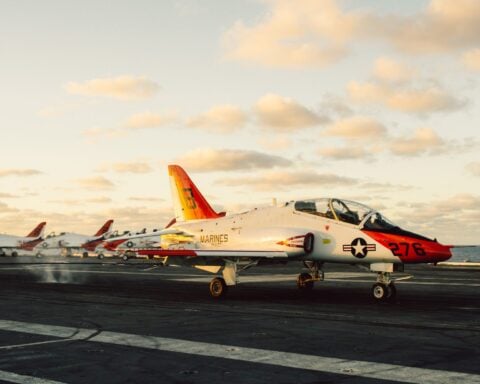The following is the March 18, 2021 Congressional Research Service report, Joint All-Domain Command and Control: Background and Issues for Congress.
From the report
The Department of Defense (DOD) is in the process of a once-in-a-generation modernization of its approach to commanding military forces. Senior DOD leaders have stated that the department’s existing command and control architecture is insufficient to meet the demands of the 2018 National Defense Strategy (NDS). Joint All-Domain Command and Control (JADC2) is DOD’s concept to connect sensors from all of the military services—Air Force, Army, Marine Corps, Navy, and Space Force—into a single network.
DOD points to ride-sharing service Uber as an analogy to describe its desired end state for JADC2. Uber combines two different apps—one for riders and a second for drivers. Using the respective users’ positions, the Uber algorithm determines the optimal match based on distance, travel time, and passengers (among other variables). In the case of JADC2, that logic would find the optimal platform to attack a given target, or the unit best able to address an emerging threat. For JADC2 to work effectively, DOD is pursuing two emerging technologies: automation and artificial intelligence, and new communications methods.
Several agencies and organizations within DOD are involved in JADC2-related efforts. The following list highlights selected organizations and projects associated with JADC2 development:
- DOD Chief Information Officer: Fifth Generation (5G) Information Communications Technologies.
- Office of the Secretary of Defense (Research & Engineering): Fully Networked Command, Control, and Communications (FNC3).
- Defense Advanced Research Projects Agency: Mosaic Warfare.
- Air Force: Advanced Battle Management System (ABMS).
- Army: Project Convergence.
- Navy: Project Overmatch.
As DOD develops new methods to command and control military forces, Congress may consider several potential issues:
- How can Congress consider JADC2-related activities in advance of validated requirements or cost estimates?
- How can DOD ensure interoperability among each of the military services’ and allies’ communications systems?
- How should DOD prioritize competing communications requirements for its future network?
- What role will artificial intelligence play in future command and control decisionmaking systems?
- What potential force structure changes will be necessary to meet JADC2 requirements?
- How should DOD manage JADC2-related efforts?
Download the document here.





